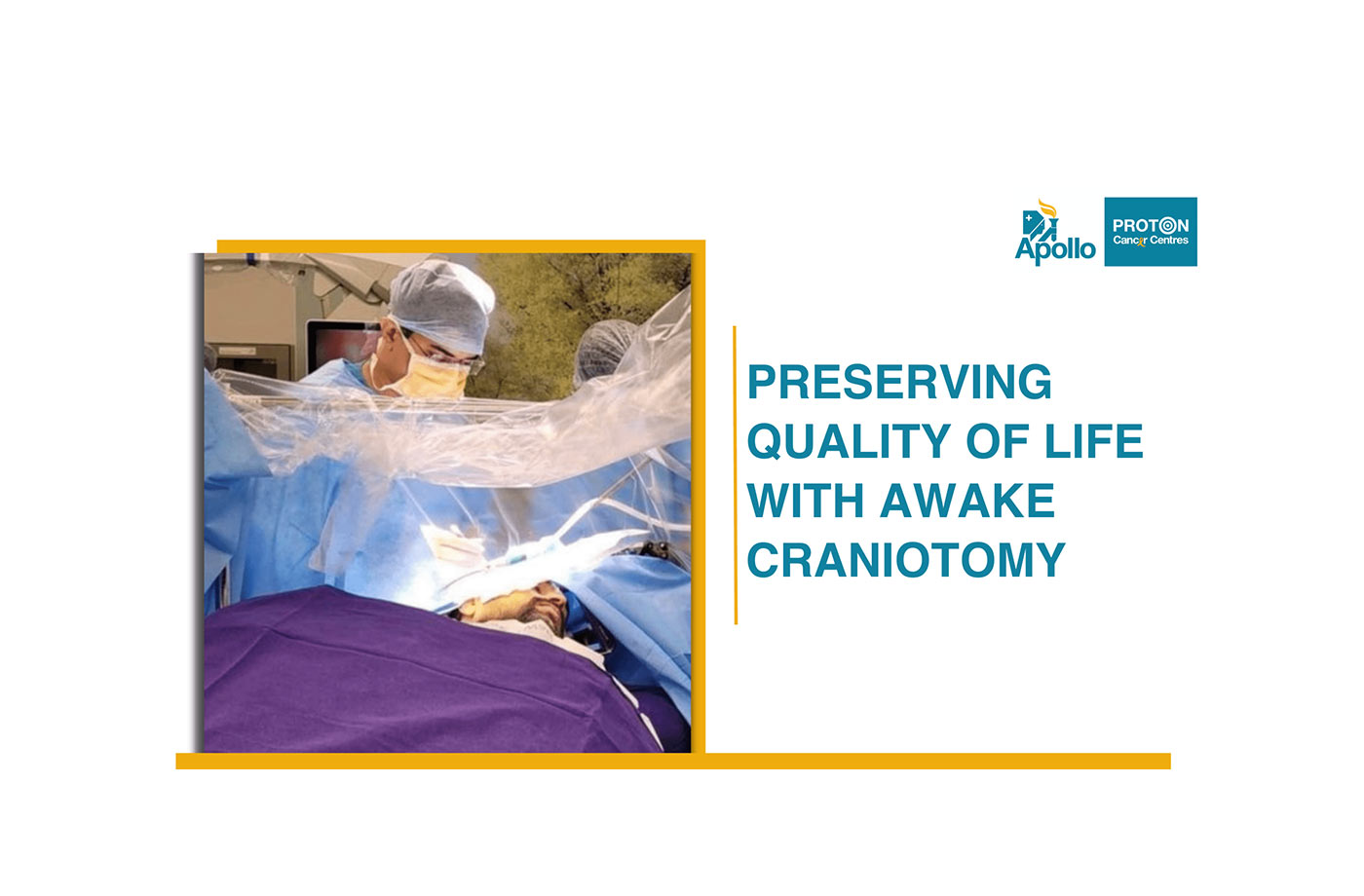Awake craniotomy is a surgery in which a brain tumor is excised while the patient is awake and reacting to us in real time. This method is most commonly used when brain tumors are found to be adhering to eloquent structures of the brain (Hand area, Leg region, Speech area, etc.). These are critical locations where even little disruptions can cause significant issues for patients.
Our goal here is to remove these tumors with an awake craniotomy, such that the patient has no evident neurological sequelae following surgery. Before undergoing surgery, the patient is extensively counseled. There might be a variety of factors for worry, such as fear about the operation as it's on the brain and the fact that he or she would be awake throughout the process. Multiple sessions are needed to fully educate a patient on his or her responsibilities and role. Because the goal is to have a favorable neurological and oncological result, just doing a biopsy and allowing a tumor behind before proceeding with adjuvant therapy such as radiation might not be considered as the best course of action.
The anxiety of inflicting a neurological impairment should be addressed first and foremost; this gives the surgical team extra confidence in removing more tumors rather than simply a biopsy. Counseling is essential since the patient's participation is the most important factor.
Even though the brain detects all sensations such as pain and touch from other areas of the body, brain tissue as a whole lacks sensibility. This adds to the fact that brain surgery is completely painless. The skin, bone, and dura are the painful structures. Our anesthetic colleague completely blocks the nerve supplying the skin and bone, so that the pain of the skin incision and skull bone removal is alleviated by the nerve blocking of the affected locations. The dura is then rendered painless by using a topical anesthetic medication. Once the pain is relieved, the patient will begin to respond to us without much discomfort.
If the tumor is in the hand/leg area, we encourage the patient to move his/her hands/leg and fingers continually so that the excision is smooth. If we are in the Speech area, we continue to interact with the patient and give them a variety of objectives to speak. When we include the comprehension region, we provide tasks such as naming a few things or repeating statements that we tell. All of them contribute to the preservation of function in the region under question. Once the operation is completed, we tell the patient of their condition and normally administer moderate anesthesia during the closure to alleviate the pain of the stitching.
This method preserves brain functioning while removing tumors. To accomplish the surgery successfully, the patient, surgical team, and anesthetic staff must all have a high level of comprehension.
Seizures are a difficulty, especially when we have to stimulate subcortically, which might lead to seizures during the process. To avoid this, we keep ice cold saline and adequate irrigation on hand. Seizure prevention injections Sometimes patients become delirious and restless, requiring us to sedate them for the remainder of the surgery; this may be prevented with comprehensive counseling. Patient comfort, pure engagement, and intensive observation keep this encounter strange at all times.

Copyright © 2023 Apollo Proton Cancer Centre. All Rights Reserved





